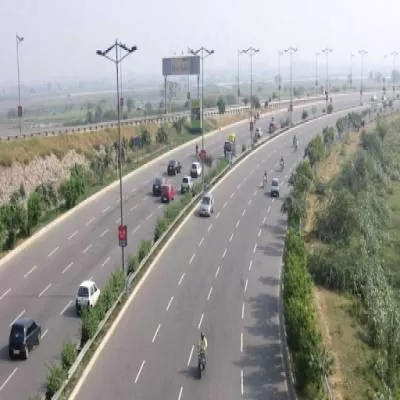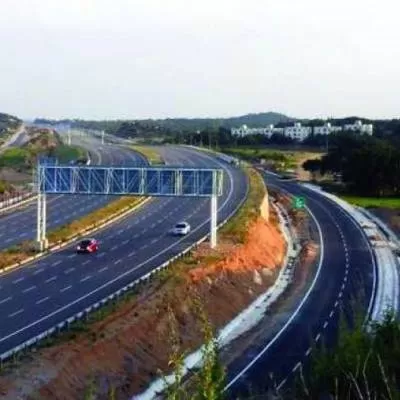- Home
- Infrastructure Transport
- ROADS & HIGHWAYS
- Navi Mumbai – A destination of choice
Navi Mumbai – A destination of choice
The population density is one of the lowest in the Mumbai Metropolitan Region (MMR), which has ensured that the quality of life is not compromised. Both CIDCO and MIDC implemented a master plan effectively to ensure that the development is well spread with large open spaces, unlike Mumbai. Since the land was owned by the government, the agencies entrusted with the job of converting this area into a world-class city, ensured that there is a good balance of social infrastructure, healthcare, open spaces, road and rail networks, making it well ahead of its time compared to any other city in India. With its high social and civic indicators, sufficient human capital, easy availability of land, and growing infrastructure, Navi Mumbai is already an attractive proposition, and the future infrastructure developments being planned only make it irresistible. The recent development of Navi Mumbai has largely been due to the construction of the Sion-Panvel Expressway, the proposed Sewri-Nhava Sheva Trans-Harbour Link, and the Navi Mumbai International Airport. The Expressway has changed the dynamics of the travel time from Sion to Panvel from over an hour to just about 30 minutes.
Several big reputed developers saw this opportunity in the early 2000s, when they realised that the infrastructure, support services, and access to quality talent would provide the right impetus to making this location the most sought after in times to come. Having seen new suburbs and destinations like Hinjewadi in Pune, Madhapur in Hyderabad, Gurugram in Delhi emerge, they realised that if those locations could work for those cities, then Navi Mumbai too would be a winner for the MMR. After a humble start in 2007 with a 250,000 lakh sq ft building for Cap Gemini, today the zone has more than 200,000 IT professionals coming in to work across various parks in Navi Mumbai. Mindspace alone has completed 7 million sq ft, with over 70,000 people working here to which will be added another 6 million sq ft that is being planned and is under development in Navi Mumbai, making it the most sought-after destination.
The aim of these developers is to create quality offerings at economical rates, bringing in the best companies from multiple sectors – information technology, banking, automation, etc. Having catered to each of these industries, these developers are already familiar with the requirements of their clients such as larger floor plates, offices designed innovatively to increase productivity and operational efficiencies. The average rents stand at Rs 59 per sq ft per month against an average of Rs 94 per sq ft in micro markets like the western suburbs. Navi Mumbai offers greater value for money because of the extent of the large space that this micro market can still offer. At present, the commercial office space is for Rs 50-55 per sq ft, which is a tempting rate and is the cheapest across India.
The IT and ITeS sectors are encouraging the demand for the commercial spaces, and this could lead to an incremental demand of 20-22 per cent every year. With a strong belief in adding quality commercial real estate to this micro-market and in this direction, reputed developers are continuing to acquire land parcels which they will transform into the development of large business parks with state-of-the-art infrastructure, better than anything seen across the country.
Also, commercial spaces like Mindspace is known for incorporating the best green practices as it promotes environmental, economic, and social benefits while protecting the needs of future generations. Utilising processes that are environmentally responsible and resource-efficient throughout a building's life-cycle; finding the balance between homebuilding and the sustainable environment; expanding and complementing the classical building design concerns of economy, utility, durability, and comfort; efficiently using energy, water, and other resources; protecting occupant health and improving employee productivity; reducing waste, pollution and environmental degradation.
The rise in demand, however, could only be met if all the required criteria were fulfilled by developers who are willing to eschew short-term benefits and commit to partner in the development of these emerging markets. Reputed developers chose to utilise this opportunity to emerge as pioneers during this transformation, and apart from meeting the stringent requirements, worked to set the benchmark for brands who were attuned to global standards. The journey to building world-class workspaces is far from over, and with each new property, Navi Mumbai aims to reach greater heights.
About the Author:
Vinod Rohira is Managing Director & CEO-Commercial Real Estate & REITs, K Raheja Corp.
Development of Navi Mumbai was first witnessed in 1971. This satellite city was slow to take-off, and there was hardly any growth for the first two decades. But all it needed was an extension of the suburban railway corridor from Airoli to Vashi, for the city to explode, in a good way. Now, Navi Mumbai can lay claim to being one of the best large-planned cities anywhere, which has grown at a frenetic pace, and eased the pressure off Mumbai without the ills that plague large cities – pollution, traffic nightmares, overcrowding, and disorganized planning. The Maharashtra Government's then bold move has given rise to a corridor where residential and commercial activities are thriving due to a combination of factors that encourage the progress of any city – great infrastructure, good connectivity, availability of professionals at all levels, skilled manpower, modern living, and workspaces. The population density is one of the lowest in the Mumbai Metropolitan Region (MMR), which has ensured that the quality of life is not compromised. Both CIDCO and MIDC implemented a master plan effectively to ensure that the development is well spread with large open spaces, unlike Mumbai. Since the land was owned by the government, the agencies entrusted with the job of converting this area into a world-class city, ensured that there is a good balance of social infrastructure, healthcare, open spaces, road and rail networks, making it well ahead of its time compared to any other city in India. With its high social and civic indicators, sufficient human capital, easy availability of land, and growing infrastructure, Navi Mumbai is already an attractive proposition, and the future infrastructure developments being planned only make it irresistible. The recent development of Navi Mumbai has largely been due to the construction of the Sion-Panvel Expressway, the proposed Sewri-Nhava Sheva Trans-Harbour Link, and the Navi Mumbai International Airport. The Expressway has changed the dynamics of the travel time from Sion to Panvel from over an hour to just about 30 minutes. Several big reputed developers saw this opportunity in the early 2000s, when they realised that the infrastructure, support services, and access to quality talent would provide the right impetus to making this location the most sought after in times to come. Having seen new suburbs and destinations like Hinjewadi in Pune, Madhapur in Hyderabad, Gurugram in Delhi emerge, they realised that if those locations could work for those cities, then Navi Mumbai too would be a winner for the MMR. After a humble start in 2007 with a 250,000 lakh sq ft building for Cap Gemini, today the zone has more than 200,000 IT professionals coming in to work across various parks in Navi Mumbai. Mindspace alone has completed 7 million sq ft, with over 70,000 people working here to which will be added another 6 million sq ft that is being planned and is under development in Navi Mumbai, making it the most sought-after destination. The aim of these developers is to create quality offerings at economical rates, bringing in the best companies from multiple sectors – information technology, banking, automation, etc. Having catered to each of these industries, these developers are already familiar with the requirements of their clients such as larger floor plates, offices designed innovatively to increase productivity and operational efficiencies. The average rents stand at Rs 59 per sq ft per month against an average of Rs 94 per sq ft in micro markets like the western suburbs. Navi Mumbai offers greater value for money because of the extent of the large space that this micro market can still offer. At present, the commercial office space is for Rs 50-55 per sq ft, which is a tempting rate and is the cheapest across India. The IT and ITeS sectors are encouraging the demand for the commercial spaces, and this could lead to an incremental demand of 20-22 per cent every year. With a strong belief in adding quality commercial real estate to this micro-market and in this direction, reputed developers are continuing to acquire land parcels which they will transform into the development of large business parks with state-of-the-art infrastructure, better than anything seen across the country. Also, commercial spaces like Mindspace is known for incorporating the best green practices as it promotes environmental, economic, and social benefits while protecting the needs of future generations. Utilising processes that are environmentally responsible and resource-efficient throughout a building's life-cycle; finding the balance between homebuilding and the sustainable environment; expanding and complementing the classical building design concerns of economy, utility, durability, and comfort; efficiently using energy, water, and other resources; protecting occupant health and improving employee productivity; reducing waste, pollution and environmental degradation. The rise in demand, however, could only be met if all the required criteria were fulfilled by developers who are willing to eschew short-term benefits and commit to partner in the development of these emerging markets. Reputed developers chose to utilise this opportunity to emerge as pioneers during this transformation, and apart from meeting the stringent requirements, worked to set the benchmark for brands who were attuned to global standards. The journey to building world-class workspaces is far from over, and with each new property, Navi Mumbai aims to reach greater heights. About the Author: Vinod Rohira is Managing Director & CEO-Commercial Real Estate & REITs, K Raheja Corp.




















